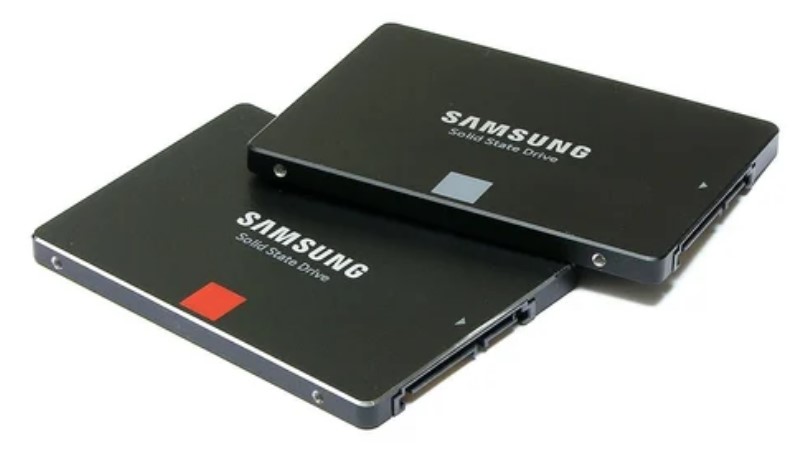Solid-state drives (SSDs) have revolutionized the way we store data. Lightning-fast speeds, near-instantaneous boot times, and whisper-quiet operation have made them the undisputed kings of modern storage. But beneath the sleek performance and promises of reliability lies a hidden truth: SSDs are not immune to failure. While less prone to mechanical breakdowns than their traditional hard disk drive (HDD) counterparts, these silent storage warriors can still meet their untimely demise, taking your precious data with them.
But fear not, for knowledge is power! By understanding the lurking dangers of SSD failures, you can equip yourself with the tools to prevent disaster and recover from the unthinkable. So, buckle up, folks, as we delve into the silent world of SSD failures, explore their insidious causes, and uncover the secrets to data salvation.
The Many Faces of SSD Failure:
Unlike the clattering heads and grinding gears of a dying HDD, SSD failures often occur silently, their symptoms subtle and easily misconstrued. But amidst the apparent normalcy, there are telltale signs and silent screams for help amidst the digital landscape.
- Performance Slowdown: Once a speed demon, your SSD suddenly crawls. This could be a warning sign of failing NAND flash memory cells, the very foundation of data storage in SSDs.
- Frequent Crashes and Freezes: Unexpected system crashes and application freezes can point to corrupted data structures or failing controllers, the brains behind the SSD’s operations.
- Data Errors and Disappearing Files: Files inexplicably vanishing or becoming corrupted? This could be the chilling whisper of bad sectors, areas on the NAND flash that can no longer hold data reliably.
- Strange Noises: While SSDs are normally silent, some models might emit clicking or ticking sounds when nearing failure. Think of it as a desperate Morse code from your storage device. You can also find the best SSD Boosters here.
Unmasking the Culprits:
Now that we’ve identified the symptoms, let’s unmask the villains behind the scenes. What nefarious forces conspire to bring down these seemingly invincible storage titans?
- Wear and Tear: Just like everything else in life, SSDs have a finite lifespan. Every write operation wears down the NAND flash cells, gradually reducing their ability to hold data. Like grains of sand in an hourglass, each write brings them closer to oblivion.
- Power Surges and Outages: Sudden power fluctuations can be fatal for SSDs, corrupting data and damaging delicate internal components. Think of it as a lightning strike frying your digital circuits.
- Overheating: Excess heat is the enemy of electronics, and SSDs are no exception. Trapped in poorly ventilated laptops or exposed to direct sunlight, they can overheat, leading to data corruption and component failure. Imagine your data sizzling under the digital sun.
- Firmware Glitches and Controller Errors: Even the most sophisticated technology isn’t perfect. Bugs in the SSD’s firmware or errors in the controller chip can wreak havoc on your data, causing unexpected failures and corruption. Think of it as a digital gremlin messing with the storage wires.
Also See: EaseUS Data Recovery Alternatives
The Art of Data Resurrection:
So, your SSD has succumbed to the inevitable, and your data hangs precariously in the digital purgatory. Fear not, for even in the darkest depths of despair, hope flickers. Data recovery specialists, armed with sophisticated tools and unwavering determination, can still breathe life back into your fallen storage warrior.
- Specialized Software: Powerful data recovery software can scan your SSD, identify salvageable data fragments, and reconstruct them into usable files. Imagine it as a digital archaeologist piecing together the shattered remnants of your data.
- Hardware-Level Recovery: In extreme cases, data recovery technicians might need to access the SSD’s internals directly, bypassing faulty controllers and extracting data directly from the NAND flash chips. Think of it as digital open-heart surgery, delicate and precise.
Prevention is the Best Medicine:
While data recovery offers a glimmer of hope, prevention is always the better option. Here are some golden rules to keep your SSD healthy and your data safe:
- Regular Backups: The ultimate safety net. Back up your data regularly to an external drive or cloud storage. Redundancy is your mantra against digital disasters.
- Surge Protectors: Shield your SSD from the wrath of power surges with a reliable surge protector. Think of it as a knight in shining armor for your digital castle.
- Keep it Cool: Ensure proper ventilation for your laptop or computer to prevent overheating. Don’t let your SSD become a victim of the digital sauna.
- Firmware Updates: Install the latest firmware updates for your SSD to fix bugs and improve performance. Think of it as giving your digital warrior a software suit of armor.
Remember, SSD failures may lurk in the shadows, but with knowledge and preparedness, you can keep your’s.
